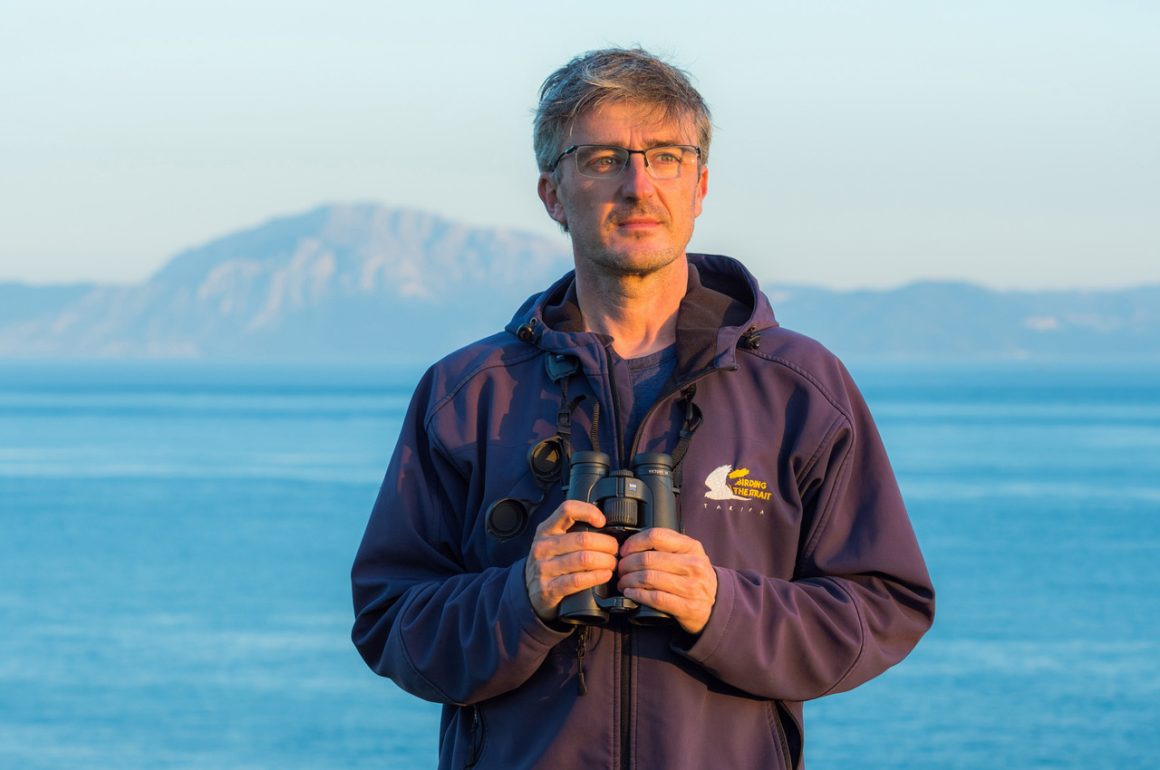
What is your favorite bird species?
This a question I’m frequently asked as a bird guide, and although I always find it difficult to answer, the truth is that the response usually ends up being the Cinereous Vulture, specifically those from the small population in the Balkans, with whom I worked for 4 fabulous years in Greece.
Moussier’s Redstart
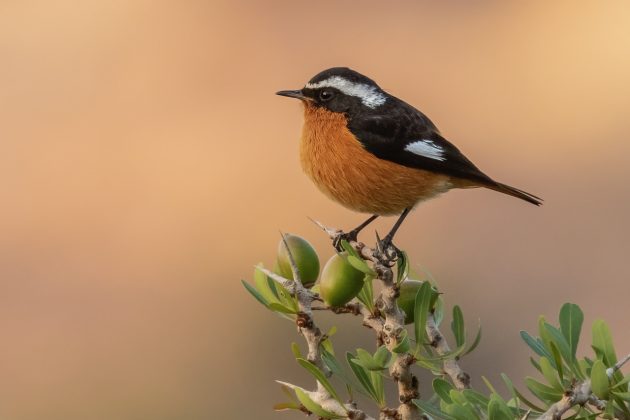
What is your name, and where do you live?
My name is Javier Elorriaga. I was born in Bilbao (Spain) and I live in Tarifa, the Strait of Gibraltar, since 2008.
Black Kites in a Cork Oak
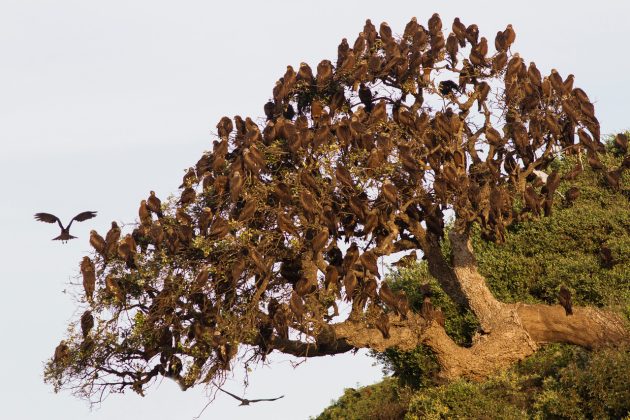
What are the main regions or locations you cover as a bird guide?
A large part of my guiding activities takes place in the Strait of Gibraltar, centered around the migration of raptors between Europe and Africa. However, every year I lead numerous tours throughout Spain from north to south, including the Canary Islands, and in Morocco, including Western Sahara.
Bearded Vulture in the Pyrenees
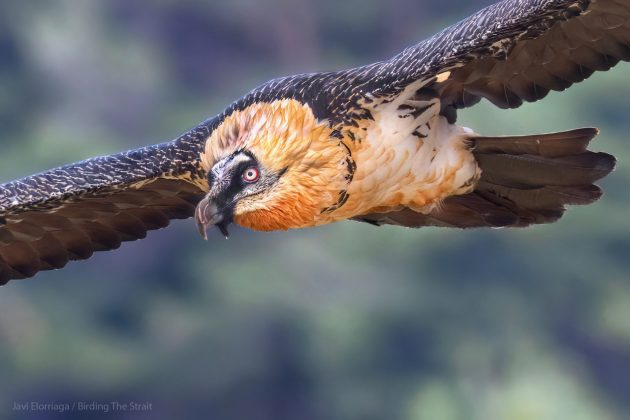
How long have you been a bird guide?
I have been a full-time bird guide since 2012.
How did you get into bird guiding?
I have had a genuine interest and passion for birds since my childhood. The four years that I spent studying the raptor migration in the Strait of Gibraltar helped me become known among numerous specialized international tour operators. This way, I began combining my work as a field ornithologist with that of a tour leader. The professional partnership with Yeray Seminario in Tarifa to establish the company Birding The Strait was the turning point that led me to wholeheartedly dedicate myself to bird guiding as a way of life.
Melanistic Montagu’s Harrier
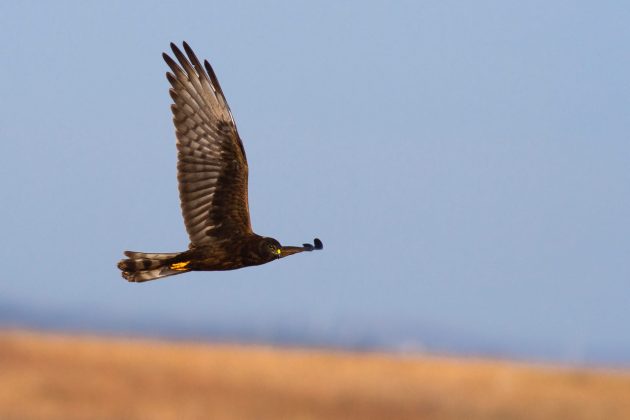
What are the aspects of being a bird guide that you like best? Which aspects do you dislike most?
One of my greatest motivations when guiding is seeing how the development of birdwatching tourism positively impacts the development of a sustainable tourism model in Tarifa, with positive implications for the conservation of birds and natural spaces. It is also rewarding to observe the high level of satisfaction and well-being this activity generates, especially among older individuals.
Without a doubt, one of the aspects I like least is witnessing firsthand the dramatic decline of some species. In my case, another negative aspect of this profession is the long periods I have to spend without seeing my son, Leo.
Northern Bald Ibis
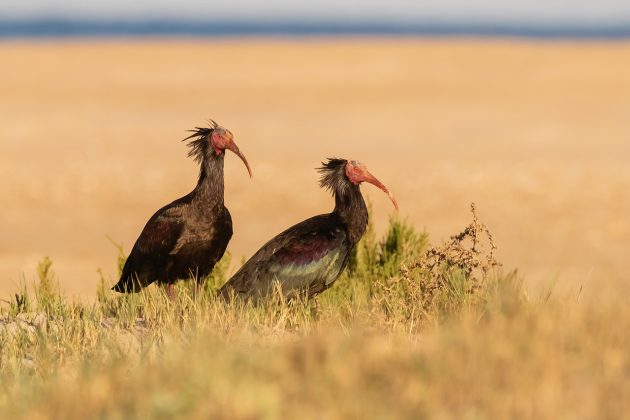
What are the top 5-10 birds in your region that you think are the most interesting for visiting birders?
Birdwise, the main attraction of the Strait of Gibraltar is the raptor migration and the opportunity to see hundreds of individuals from numerous species at once and at close range, in a setting that provides a unique geographical sensation as you literally watch the birds flying between two continents. However, the most sought-after species are Rüppell’s Vulture (a regular vagrant from Africa), Northern Bald Ibis, Spanish Imperial Eagle, Red-necked Nightjar, Little Swift, Balearic Shearwater, European Bee-eater, Eurasian Hoopoe, and the Iberian lynx (!), to name but a few.
Rüppell’s Vulture
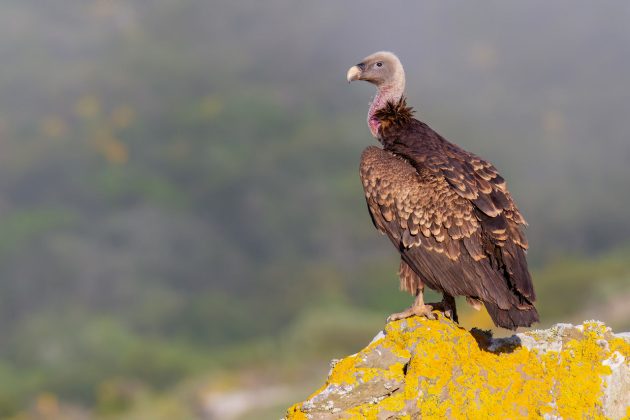
Can you outline at least one typical birdwatching trip in your area? Please briefly describe the locations, the key birds, and the approximate duration of such a trip.
My flagship tour is focused on enjoying the raptor migration in the Strait of Gibraltar. This tour is based in Tarifa (5 to 7 days), from where we visit the best birdwatching sites in the Strait of Gibraltar to ensure the best viewing conditions, both in terms of bird numbers and proximity. We combine this with a pelagic birding and whale-watching trip, sailing halfway between Europe and Africa, the Mediterranean and the Atlantic. We also spend two days in the iconic city of Ronda, where we immerse ourselves in an impressive limestone mountain landscape, the realm of the Griffon Vulture. The Flamingo (both in the form of the bird and the music), Mediterranean cuisine, and charming hotels are a distinctive and determining part of this tour.
Thermalling Griffon Vultures in the Strait of Gibraltar
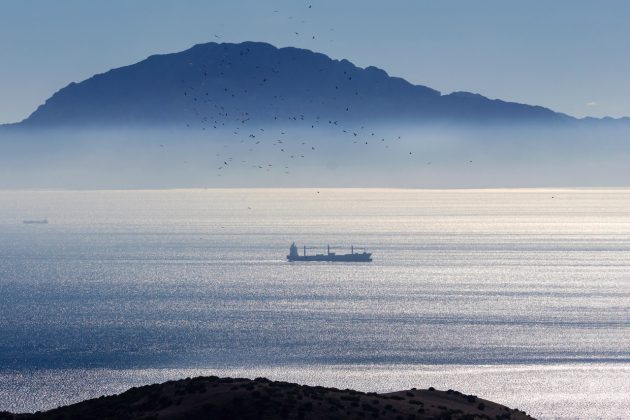
What other suggestions can you give to birders interested in your area?
To the many loyal international birders addicted to the fall migration in the Strait, I would definitely recommend visiting in the spring. Although enjoying it fully requires a more intimate knowledge of the area and bird dynamics, they will undoubtedly be greatly surprised by the lush greenery of the landscape and the dramatic sight of raptors reaching the continent exhausted after the life-or-death ordeal of flying over the sea under challenging conditions. I would also recommend not letting the spectacle of the raptors overshadow the chance to observe seabird migration from the Tarifa lighthouse at the southernmost point of the continent, with particular attention to the Balearic shearwater, Scopoli’s Shearwater, Cory’s Shearwater, and the puffins of the population wintering in the Mediterranean.
Scopoli’s Shearwater
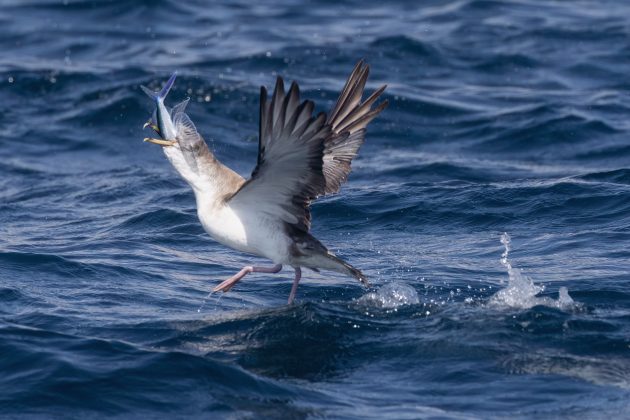
Another piece of advice: don’t think that the feared and unpleasant Levante (easterly) wind in the Strait is a problem. We locals know that strong easterly winds invariably bring the best moments of raptor migration in Tarifa. But do take care of your telescopes so they don’t fly away too!
If any reader of 10,000 Birds is interested in birding with you, how can they best contact you?
I am always available via the website of my company, Birding The Strait.
Short-toed Eagles on migration across the Strait of Gibraltar
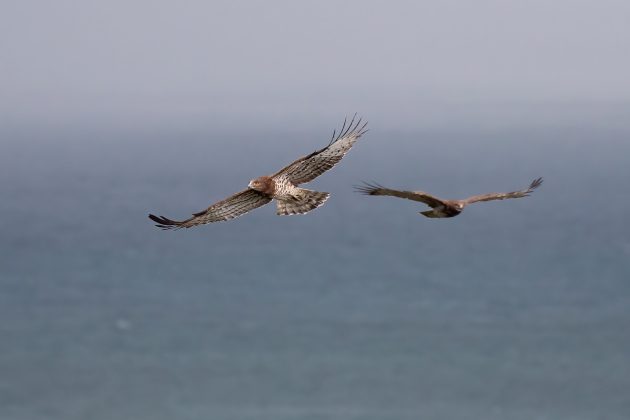
Is there is anything else you would like to share with the readers of 10,000 Birds?
Make use of citizen science with specialized platforms like eBird or similar, both in your ornithological expeditions and in your everyday life. This, in addition to contributing to science, conservation, and building up a connected global birding community, will allow you to continuously improve and observe the world in a more mindful way.
Immature Spanish Imperial Eagles in Central Spain
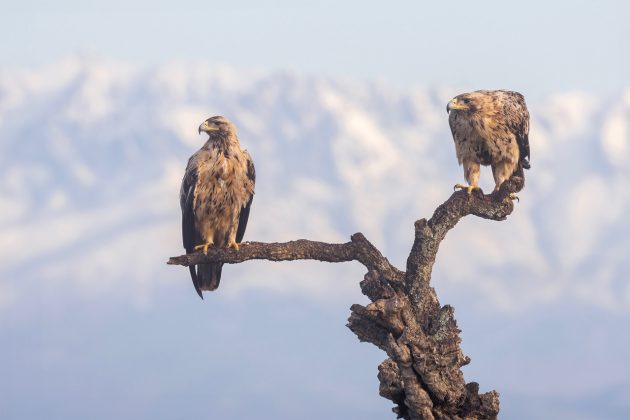

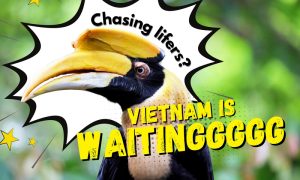

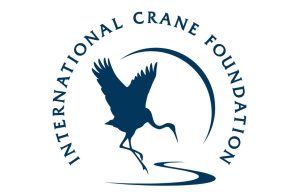







Javi is a great guide – I have fond memories of the Rüppell’s vulture he found for me in October 2022.
Hallo, Viele Grüße aus Heinsberg in Deutschland.
Sprechen Sie deutsch ?, Machen Sie auch freie Termine ?
Kann man Sie kurzfristig ansprechen ?
Eine Info würde mich freuen.
Karl-Heinz Zurmahr
Hello, I contacted you directly with a reply by email. Generally, all inquiries regarding birding with the guides profiled should be directed at the guides directly, not at 10,000 Birds. At the end of each profile, the guides provide a way to contact them.
I am not sure Javier speaks German – seems unlikely but you can certainly ask him directly.